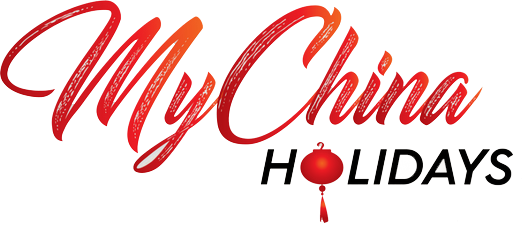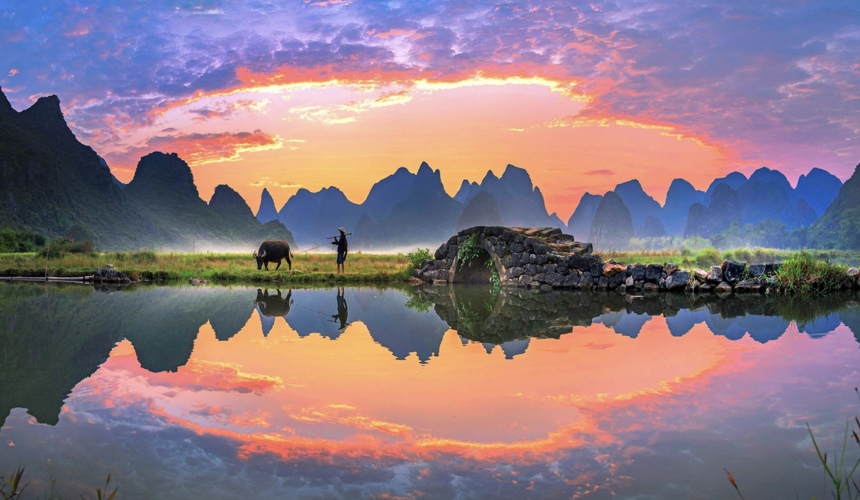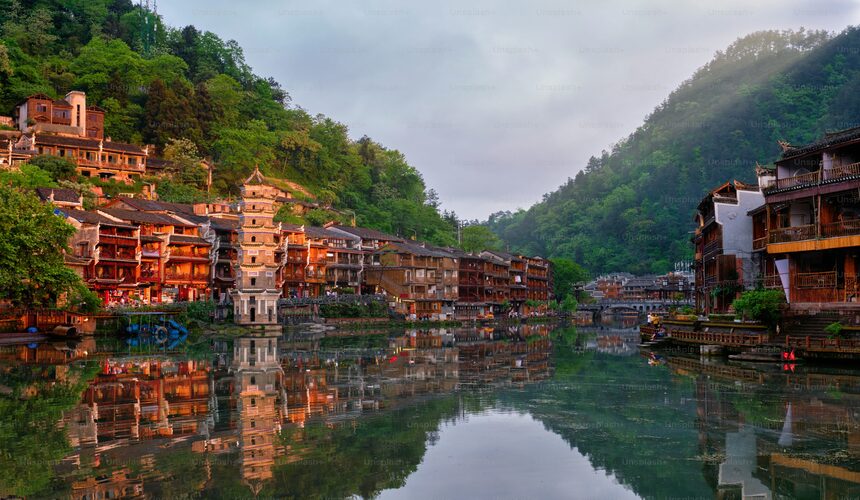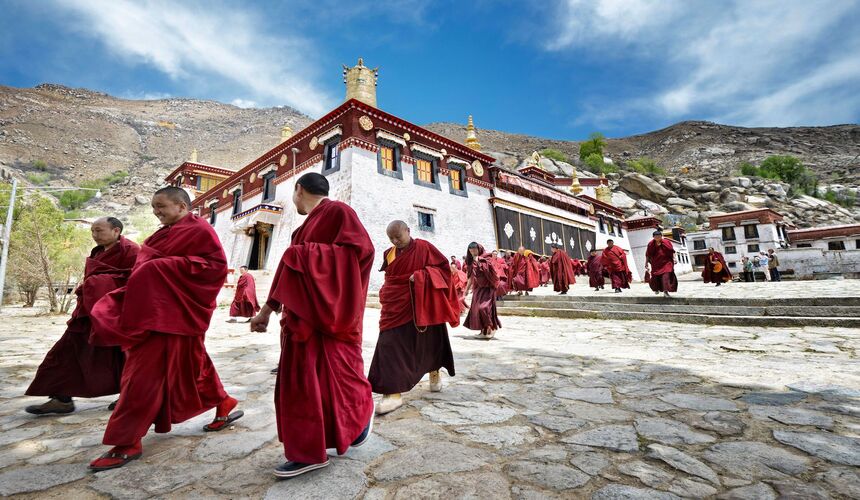
Tibet Ultimate Travel Guide: Culture, Permits, and Adventure Tips
Dreaming of snow-capped peaks, ancient monasteries, and spiritual serenity? This Tibet travel guide is your starting point for an unforgettable journey to one of the world’s most extraordinary regions. Whether you’re seeking sacred experiences, epic landscapes, or meaningful cultural immersion, travel to Tibet offers it all. We will present you with an understanding of essential Tibet permits to uncover hidden gems, as well as cover the most important things to do in Tibet. Combined with cultural insights and expert adventure travel Tibet tips. Ready to experience the roof of the world? Let’s begin.
1. Why Visit Tibet?
Tibet isn’t just a destination, it’s a spiritual and natural frontier like no other. Known as the “Roof of the World,” this remote Himalayan region stirs the soul with its breathtaking high-altitude landscapes, timeworn monasteries, and deeply rooted Tibetan culture. For those who crave an authentic tour in China, travel to Tibet offers a once-in-a-lifetime experience. It’s a place where every step feels sacred and every view leaves you humbled. Here’s why travelers from around the world are enchanted by Tibet.
- Spiritual Richness: Home to Tibetan Buddhism’s most revered sites, Tibet invites reflection and connection.
- Spectacular Scenery: Snow-capped mountains, turquoise lakes, and vast plateaus create landscapes that feel untouched by time.
- Cultural Depth: Witness centuries-old traditions, chanting monks, and vibrant festivals that pulse with heritage.
- Adventure & Discovery: From trekking Mount Kailash to visiting Everest Base Camp, adventure travel in Tibet is as rewarding as it is challenging.
Visiting Tibet isn’t just about seeing, it’s about feeling. It’s about experiencing a worldview shaped by elevation and deep spiritual belief.
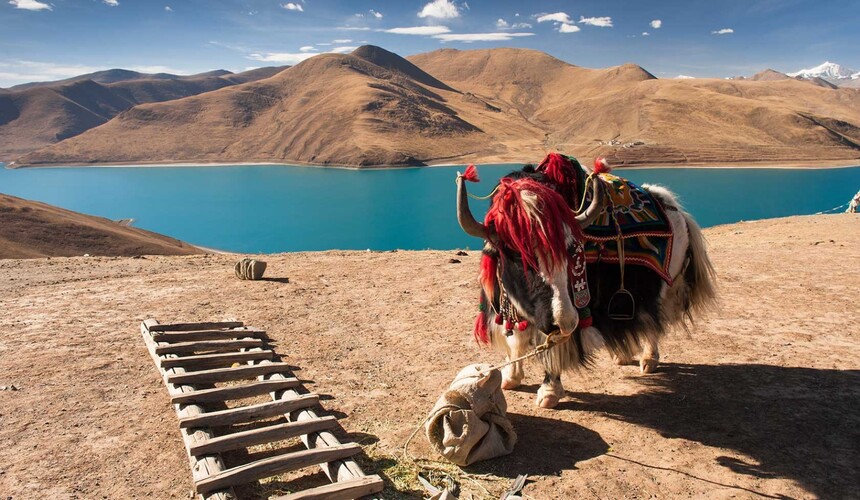
2. Tibet Travel Permits and Regulations
If you’re planning to travel to Tibet, understanding the permit requirements is essential. Independent travel is not allowed, and all foreign visitors must go through a licensed travel agency. This section breaks down exactly what you need to know about Tibet permits to ensure your trip is smooth and legally compliant.
- You must apply Tibet Travel Permit (TTP) : Tibet Travel Permit is an official travel document issued by Tibet Tourism Bureau. You need to have a Tibet Travel Permit to enter Lhasa or any other parts of the Tibetan Autonomous Region and apply through a travel agency. You must book a full tour package (with guide, itinerary, transportation) to receive it.
- How long does it take to get a Tibet Travel Permit? Normally, it takes around 7-14 working days to process your Tibet Permit at the Tibet Tourism Bureau. Therefore, we suggest applying for the permit at least 30 days before the visit to Tibet. As for urgent permits, it will take around 4-5 days to process, but an extra charge is required.
- Documents for the application: Before you can apply for the Tibet permit, you must have a valid Chinese visa. Once you have your visa, we will handle the Tibet permit. Scanned copy of passport and Chinese Visa. If you work or live in China, you need to provide a certificate of working in China for 28 days.
- Additional Permits for Restricted Areas: Depending on your itinerary, you may need extra documents beyond the Tibet Travel Permit. Aliens’ Travel Permit (ATP): Required for areas outside Lhasa such as Shigatse, Gyantse, Everest Base Camp, etc. Military Permit: Needed for sensitive border areas like Mount Kailash or Nyingchi. Your tour operator must apply in advance. Foreign Affairs Permit: Sometimes needed for diplomatic or journalist travelers.
- No Independent Travel Allowed: Foreign travelers cannot enter Tibet alone. You must be accompanied by a licensed Tibetan guide throughout your journey. Normally, the group sizes can range from 1 person to 10 people. Custom itineraries are allowed, but still require full tour booking.
- Domestic Flights or Trains: You’ll need a physical copy of your Tibet Travel Permit to board a flight. For trains, a scanned copy is typically enough.
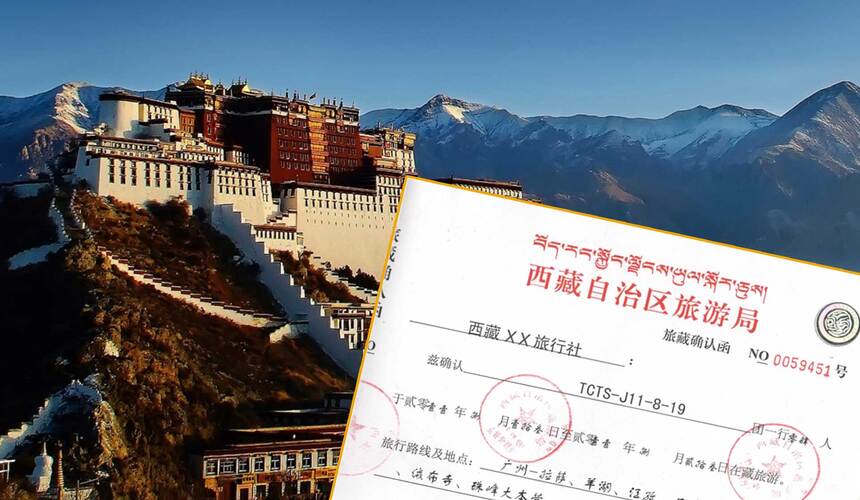
3. Best Time to Visit Tibet
Spring
Spring in Tibet brings fresh mountain air, blooming wildflowers, and clearer skies. It’s a wonderful time to explore monasteries and enjoy cultural festivals without the summer crowds. The weather is cool but pleasant, making it ideal for sightseeing, photography, and gradually acclimating to the region’s high altitude.
- Why Go: The plateau awakens with wildflowers, snow-capped peaks, and fewer tourists.
- Highlights: Clear mountain views, moderate temperatures, and blooming landscapes.
- Best For: Photography, monastery visits, and cultural festivals.
Summer
Summer is Tibet’s warmest and most vibrant season, with green valleys, long daylight hours, and active local life. Though occasional rain may occur, most days remain travel-friendly. It’s the best time for high-altitude trekking, visiting sacred lakes, and exploring remote regions like Mount Kailash and Everest Base Camp.
- Why Go: Lush greenery, vibrant local life, and access to high-altitude destinations like Mount Kailash.
- Consider: Monsoon rains can affect travel in certain areas, but Tibet receives less rainfall than other parts of China.
- Best For: Adventure travel in Tibet, trekking, spiritual retreats, and highland exploration.
Autumn
Autumn is widely considered the best season to visit Tibet because of its crisp weather, stunning visibility, and golden-hued landscapes. Fewer crowds after summer, while the conditions remain excellent for photography, trekking, and road trips. Skies are especially clear, offering picture-perfect views of the Himalayas and an authentic feel of Tibetan life.
- Why Go: Tibet’s golden season with clear blue skies and fewer crowds.
- Highlights: Ideal for Everest Base Camp trips, long drives across the plateau, and photographing the Himalayas.
- Best For: Scenic road trips, hiking, cultural festivals like the Bathing Festival and Ongkor.
Winter
Winter in Tibet is cold but calm. Fewer tourists make for a more intimate cultural experience, especially in Lhasa. Some areas may be snowbound. Winter is perfect for budget travelers and those seeking spiritual depth without the crowds.
- Why Go: Fewer tourists, serene monasteries, and strong sunlight despite cold temperatures.
- Consider: Some remote areas (like Everest) may be inaccessible due to snow. Certain permits may be restricted.
- Best For: Budget travelers, cultural immersion in Lhasa, and experiencing Tibetan culture without crowds.
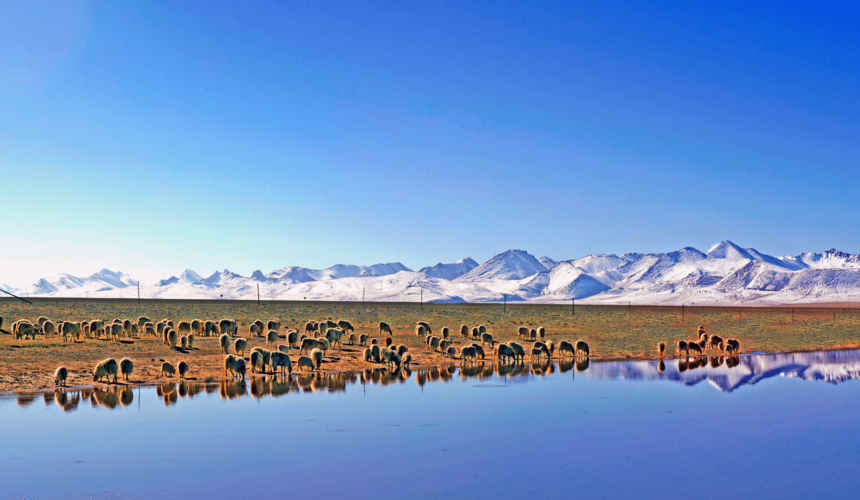
4. Top Things to Do in Tibet
Tibet is a land of profound spirituality and dramatic landscapes. Whether you’re seeking sacred moments in ancient monasteries or thrilling treks through Himalayan passes, there are countless unforgettable things to do in Tibet. Here are the top experiences that capture the heart of the plateau.
- Visit the Potala Palace in Lhasa: Once the winter residence of the Dalai Lama, this architectural wonder towers above Lhasa and symbolizes Tibetan Buddhism. Inside, you’ll find golden stupas, sacred scriptures, and centuries-old murals.
- Explore Jokhang Temple and Barkhor Street: The spiritual center of Tibet. Jokhang Temple draws pilgrims from across the region. Outside, Barkhor Street offers a mesmerizing clockwise kora (pilgrimage circuit) filled with incense, prayer wheels, and local vendors.
- Journey to Everest Base Camp (Tibet Side): Stand face-to-face with the world’s highest peak at the Tibetan Everest Base Camp. The drive itself is breathtaking, crossing high mountain passes and remote monasteries.
- Marvel at the Beauty of Namtso Lake: One of Tibet’s most beautiful sacred lakes. Namtso dazzles with turquoise waters and snow-capped mountain reflections. It’s also a great place for stargazing.
- Experience Life in a Monastery: Stay overnight in a monastery guesthouse to witness morning chants. Or simply walk through the halls of historic places like Tashilhunpo Monastery in Shigatse or Ganden Monastery near Lhasa.
- Ride the Qinghai–Tibet Railway: The world’s highest railway offers panoramic views of the Tibetan Plateau. It’s a great way to acclimate gradually to the altitude while enjoying the surreal scenery.
- Discover Hidden Valleys and Villages: Step off the tourist path and explore places like the Yarlung Valley (the cradle of Tibetan civilization). Explore the peaceful town of Gyantse, home to the unique Kumbum Stupa.
- Attend a Tibetan Festival: Time your visit with festivals like Saga Dawa or the Shoton Festival.
- Hike in the Nyenchen Tanglha or Yarlung Tsangpo Valleys: These less-traveled regions offer stunning alpine scenery, deep river canyons, and authentic Tibetan village life. Perfect for those seeking true adventure travel in Tibet.
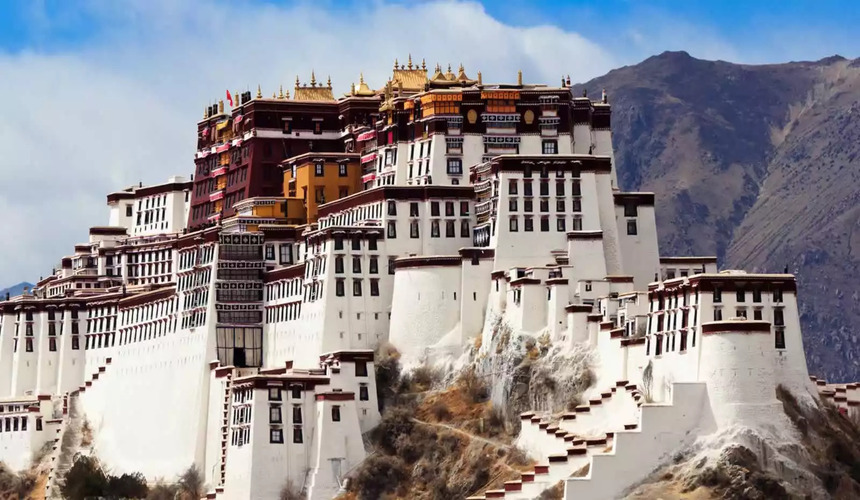
5. Tibet Travel Tips
Traveling to Tibet is a thrilling and unique adventure, but it requires some extra preparation due to the region’s high altitude, cultural sensitivity, and permit regulations. Here are essential Tibet travel tips to help you have a smoother trip.
- Prepare for High Altitude: Tibet sits on the world’s highest plateau, with average elevations above 4,000 meters (13,000 feet). Altitude sickness is common; symptoms include headaches, dizziness, and nausea. It can occur in some people at around 2,500 m, but everyone is different. You should avoid intense activity when you get to Lhasa and ensure you have enough time to acclimatise and take things slowly.
- Travel length for Tibet: If you have only 4 to 5 days, it can allow you to explore Lhasa City. When you have 6 to 8 days, then you can do so much more on top, such as visit Namtso Lake or Gyantse Town. As for adding Everest Base Camp, we suggest you need more than 9 days.
- Bring cash with you: Facility conditions in Tibet are not as nice as in large cities. Also, money changing and drawing services are not usually available in some mountain areas or villages, it will be better to bring some cash with you.
- Travel to Tibet via train: You can reach Tibet either by airplane or by train. At present, there are direct flights to Lhasa from Beijing, Chengdu, Chongqing, Xining, Xi’an, Shangri-La, and Kunming. We recommend that you take a low-cost train, with a place at the window, so you can have time to slowly adapt to the high altitude.
- Try Local Cuisine: Sample traditional dishes like tsampa (roasted barley flour), momo (dumplings), and yak butter tea. However, if you have a sensitive stomach we suggest to carry snacks or familiar food
- Respect Tibetan Culture and Customs: Tibetans are warm and hospitable but deeply spiritual. Dress modestly, especially in monasteries. Ask permission before photographing people, especially monks. Walk clockwise around sacred sites and prayer wheels.
- Pack Smart: Bring layers for temperature swings—days can be warm, but nights get cold. Essential items include: Sun protection (sunscreen, sunglasses, wide-brimmed hat). Comfortable walking shoes or hiking boots. Reusable water bottle. Personal medications and a basic first aid kit.
6. Sample itinerary for you
Here are some sample itineraries for a Tibet trip that perfectly balances culture, adventure, and acclimatization. Or simply drop us a message on WhatsApp: +86 187 2197 8867 to customize an itinerary that suits your travel style and preferences best.
- 8-Day In-depth Tibet Tour: Be ready to explore the home of the Dalai Lamas and prepare to immerse yourself in their religious history.
- 6-Day Enchanting Tibet Tour: Take in all that Tibet can offer with the amazing 6-day voyage to the famous landmarks such as Barkhor Street, Johkang Temple, Sera Monastery.
- 5-Day Magical Tibet Tour: This 5-day tour package will surely be a feast for the eyes, peace for the senses and joy to the spirit to explore for any first timer or seasoned traveler.
Tibet is a land of breathtaking beauty, rich culture, and unforgettable adventure. A destination that challenges and inspires in equal measure. Careful planning ensures your journey is smooth and deeply rewarding. Ready to experience the magic of the Roof of the World? Chat with our travel consultants today to get personalized advice, help with permits, and tailor-made itineraries that suit your travel style. Your unforgettable Tibet adventure starts here!
